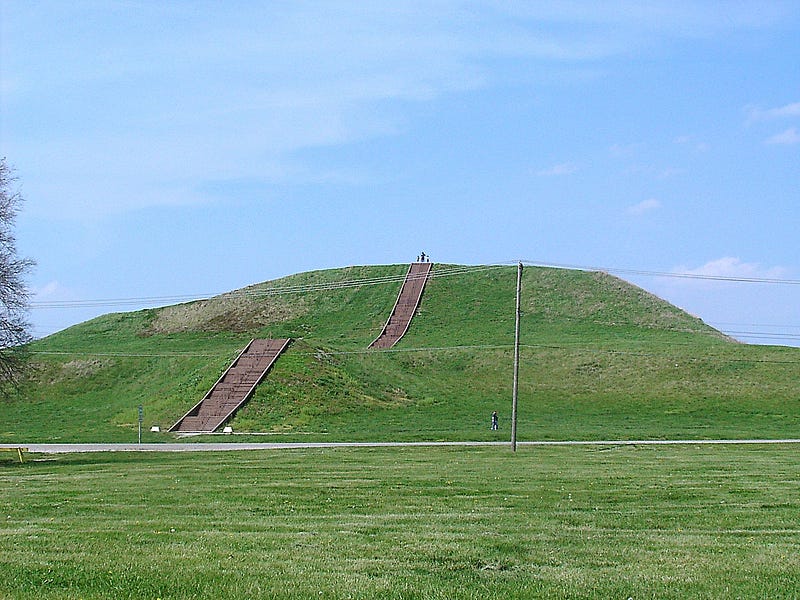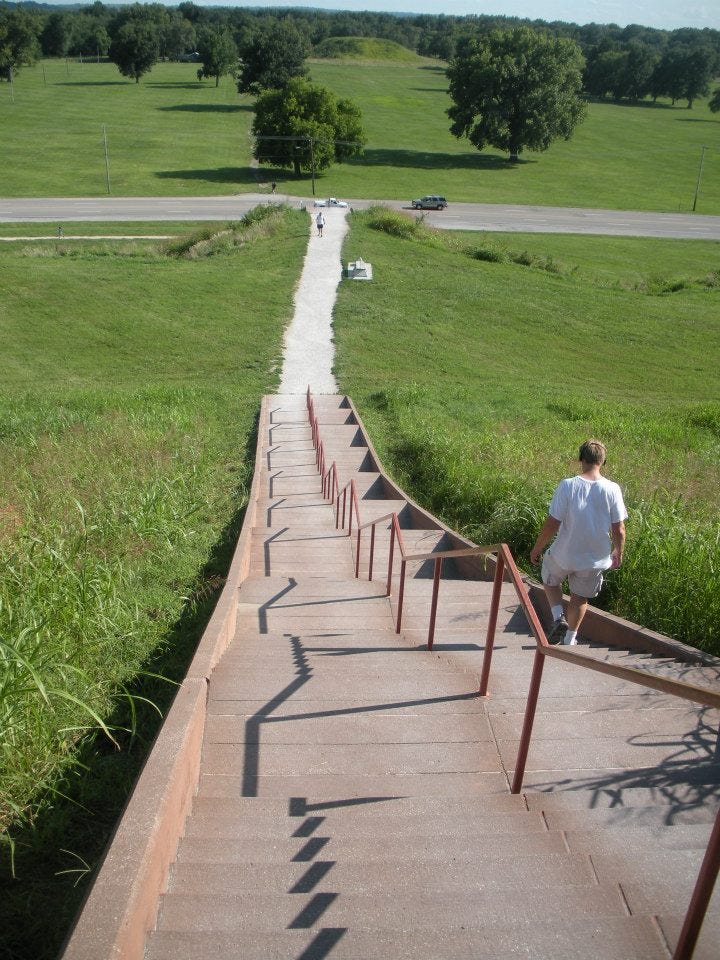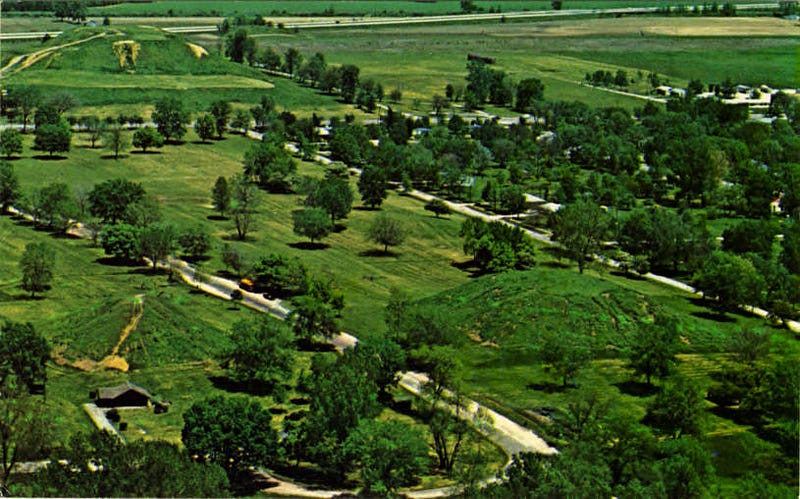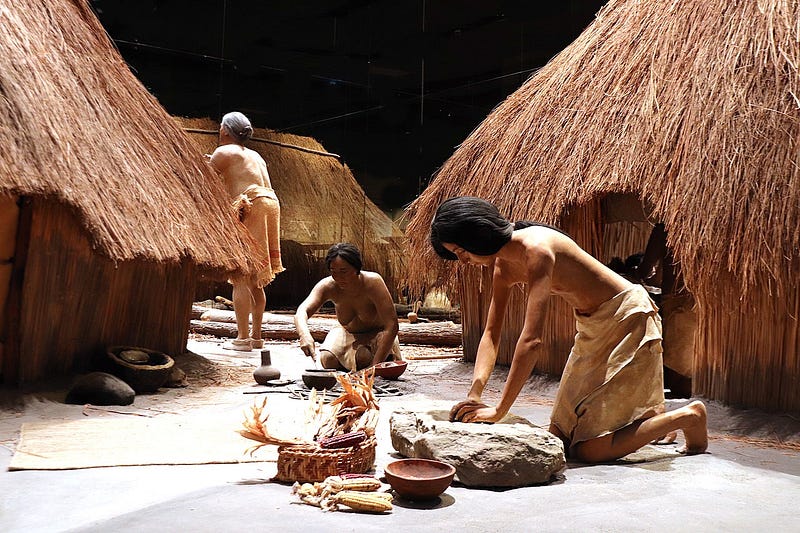The Remarkable Rise and Fall of Cahokia: North America's Ancient Gem
Written on
The Birthplace of Cahokia
Cahokia, recognized as the oldest city in North America, once surpassed London in size. Despite the abundance of pre-Columbian societies, knowledge about North American cultures is often limited.

Monks Mound — [Photo: Skubasteve834, CC BY-SA 3.0, via Wikimedia Commons]
One fascinating aspect of pre-Columbian America is the Great Mound Builders. Over the centuries, these cultures established a variety of traditions focused on creating extensive earthen structures, including mounds and platforms. Cahokia stood as the most prominent center of this civilization, often referred to as the city of 100 mounds, although the actual number exceeds that. It was the first major proto-city north of Mexico and the largest civilization between Mexico's deserts and the Arctic.
Cahokia, situated in Illinois near the border of Saint Louis, Missouri, rests along the banks of Cahokia Creek. The site's origins are tied to the emergence of the Mississippian culture, which began developing around the 8th century, spanning farming communities across the Midwest and Southeast of the present-day United States. The peak of this culture occurred between 1000 AD and the early 13th century.
The settlement of Cahokia can be traced back to around 900 AD, but it transformed into a significant urban center only later. The Mississippian culture is considered the predecessor of North America's forest world civilization, akin to the role played by the Olmecs in Mesoamerica or the Chavin culture in the Andes.
The Flourishing Period of Cahokia
Starting around 1050 AD, Cahokia experienced a remarkable cultural surge, attracting populations from surrounding regions. Residents constructed homes and developed urban infrastructure, including a plaza that spanned an area equivalent to 37 football fields. This central area served multiple purposes, from hosting sports events to religious ceremonies.
Innovations such as triangular arrowheads, shell vessels, and earthen pyramids emerged during this period, alongside the production of red stone figurines. By around 1200 AD, Cahokia's population surged to between 30,000 and 45,000 individuals, surpassing that of London and many contemporary European cities. The archaeological findings suggest that the inhabitants were culturally diverse.
The rapid growth of Cahokia coincided with the increased importance of corn in the local diet, unifying tribes across the Mississippi floodplain and establishing Cahokia as the predominant community within the Mississippian culture.

[Photo: Stephanie A. Terry, CC BY-SA 4.0, via Wikimedia Commons]
Cahokia’s Governance and Architecture
The emergence of monumental earth pyramids and the presence of supernatural motifs imply that Cahokia may have had connections with southern civilizations like the Maya and Toltecs. These influences likely shaped the architectural styles observed there. It's thought that secular and religious authorities were closely intertwined, often symbolized by the recurring man-bird motif.
Tim Pauketat from the University of Illinois and Tom Emerson propose that Cahokia's rapid expansion stemmed from a visionary leader who presented a compelling new lifestyle to attract individuals from afar. Conversely, Gayle Fritz from Washington University suggests that Cahokia, while a city, was primarily a community of farmers cultivating nearby lands, as evidenced by the lack of extensive granary remains.

Cahokia’s architecture was striking, characterized by squares surrounded by mounds of various geometric shapes. These included:
- Platforms: Flat-topped mounds supporting wooden structures or temples
- Conical Mounds: Circular mounds, typically serving as elite burial sites
- Canopy Mounds: Rectangular mounds with gabled roofs, used for ceremonial and astronomical purposes
The city's heart was a central square encircled by 17 mounds, serving as residences for the elite. Monks Mound, the largest, stood at 30 meters high and had a base larger than the Great Pyramid of Giza. Originally, all mounds were adorned with colorful clay.
What Was Monks Mound Like?
Monks Mound featured four terraced levels, each surrounded by wooden palisades. Wooden structures topped each terrace, and a prominent ramp led to the summit, where a tall wooden pole and the main temple were located. The mound, named after French monks who once resided nearby, provided a commanding view of the Mississippi River floodplain.
The central square was enclosed by 4–5 meter high palisades, forming bastions and gates that separated the elite from the general population. Nearby, enigmatic circles formed from wooden posts served as astronomical observation points.

[Photo: Prayitno / Thank you for (12 millions +) view, CC BY 2.0, via Wikimedia Commons]
Other Notable Structures
Mound 72, a significant conical mound, contained around 300 burials, including that of a notable dignitary interred on a shell foundation shaped like an eagle. The remains of 53 ritualistically sacrificed women and four men were also discovered, indicating ritual human sacrifice practices. Other significant structures included:
- Fox Mound: A preserved pyramidal platform
- Canopy Mounds: Marking cardinal directions
- Circular Saunas: Covered with leather or bark
- Residential Buildings: Constructed from wood in rectangular layouts
The Decline of Cahokia
By the mid-13th century, Cahokia began to lose its prominence as competing centers emerged nearby, though none matched its scale. By the time Columbus arrived in the New World, Cahokia had become largely abandoned, with vast areas around the Mississippi and Ohio rivers depopulated. The reasons for its decline remain as enigmatic as its rise.
Several factors may have contributed to this decline. The city's prosperity coincided with an unusually favorable climate, which shifted to cooler, drier, and more unpredictable conditions. Such changes would have posed significant challenges for an agrarian society reliant on consistent crop yields.
Evidence suggests that, between 1175 and 1275, residents constructed and rebuilt palisades around the city, indicating a growing threat or reality of conflict, possibly due to resource scarcity. Environmental issues such as deforestation and pollution may have also emerged, complicating life in this densely populated area. Given that Cahokia thrived for approximately 300 years, with its peak lasting only about half that time, its eventual decline is not surprising.
The Mississippian culture persisted until the early 15th century, with Monks Mound remaining a notable remnant. Since 1982, the archaeological site has been recognized as a UNESCO World Heritage Site.

[Photo: Aemurray wustl, CC BY-SA 4.0, via Wikimedia Commons]
The Rediscovery of Cahokia
European settlers were astonished to encounter the mounds of Cahokia, often attributing their construction to foreign civilizations such as the Phoenicians or Vikings. Henry Brackenridge, an amateur historian, provided one of the first detailed accounts of the Cahokia mounds during his exploration in 1811, marveling at their grandeur akin to that of the Egyptian pyramids.
However, reports of his findings went largely unnoticed as the U.S. government prioritized the removal of Native Americans from their lands. This was exemplified by the 1830 law signed by Andrew Jackson, which justified the relocation of eastern tribes based on the belief that they were incapable of utilizing the land effectively.
Archaeological Investigations at Cahokia
The discovery of an ancient city comparable in size to Washington, D.C., would have challenged settler narratives. Over time, many archaeological sites from the Mississippian culture were destroyed or paved over. Despite being designated a state park in 1925, Monks Mound continued to be used for recreational activities.
The tide turned in the 1960s when President Eisenhower's interstate highway construction program prompted archaeological studies along proposed routes. These investigations unveiled the remarkable significance of Cahokia, revealing it as a remarkable cultural phenomenon.